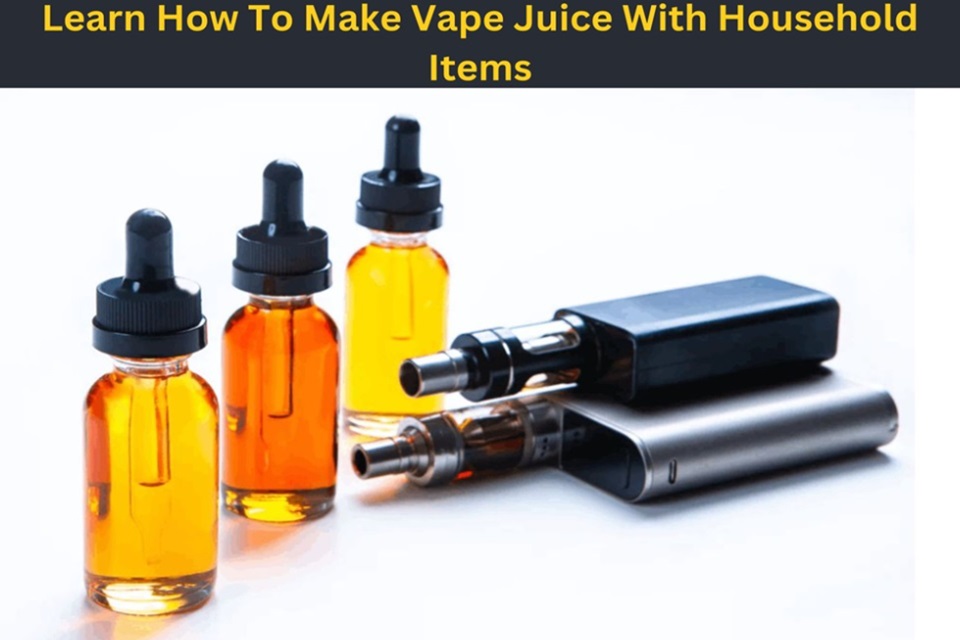How To Make Vape Juice With Household Items To Enhance Vaping Experience
Vaping has become a popular hobby for many, offering a customizable and flavorful alternative to traditional smoking. While commercial vape juices are widely available, making your own vape juice at home can be a fun and rewarding experience. Not only does it allow you to experiment with flavors, but it also gives you control over the ingredients used. In this article, we will guide you through the process of creating vape juice with household items, ensuring a satisfying and personalized vaping experience.
Understanding Commercial Vape Juice
Before diving into the DIY process, it’s important to understand what goes into commercial vape juice. Typically, these products are made from a combination of propylene glycol (PG), vegetable glycerin (VG), flavorings, and nicotine. Each ingredient plays a crucial role in creating the overall vaping experience, from the production of vapor to the flavor and throat hit.
Essential Ingredients For Homemade Vape Juice
To create vape juice at home, you will need a few basic ingredients, many of which you might already have in your kitchen or bathroom. Here’s what you need:
- Vegetable Glycerin (VG): A thick, sweet liquid that produces large vapor clouds.
- Distilled Water: Used to thin the VG and create the right consistency.
- Flavorings: Food-grade flavorings can be used to add taste.
- Nicotine Solution: Optional and should be handled with care.
Step-By-Step Guide: How To Make Vape Juice With Household Items
Step 1: Gather Your Ingredients
Ensure you have all the necessary ingredients and tools. You will need Vegetable glycerin, Distilled water, Food-grade flavorings (optional), Nicotine solution (optional), Measuring cups or syringes, and Clean mixing containers.
Storage Bottles
Step 2: Prepare the Base
Start by preparing the base of your vape juice. Mix vegetable glycerin with distilled water in a ratio of 70% VG to 30% distilled water. Adjust this ratio based on your preference for vapor production and throat hit.
Step 3: Add Flavorings
If you want to add flavor to your vape juice, now is the time. Use food-grade flavorings and add a few drops to the VG and water mixture. Start with a small amount and adjust according to taste.
Step 4: Incorporate Nicotine (Optional)
If you prefer your vape juice to contain nicotine, carefully add a nicotine solution. Use gloves and measure precisely to avoid any health risks. The amount of nicotine added will depend on your desired strength.
Step 5: Mix Properly
After all the ingredients have been mixed together, make sure to shake the mixture well. This will guarantee that all the elements are evenly spread out, leading to uniform vape juice.
Step 6: Steep The Mixture
Steeping allows the flavors to meld together, enhancing the overall taste. Store the mixture in a cool, dark place for 2-7 days. Shake the bottle periodically to aid the process.
Step 7: Test & Check
After letting it steep, try your vape juice. If you don’t like the flavor, you can adjust it by adding more flavoring or changing the VG to water ratio.
Homemade vs. Commercial Vape Juice
Ingredients
Creating your own vape juice at home involves using simple and readily available ingredients, whereas commercially available products often contain specific additives designed to improve their overall performance.
Quality Control
Commercial vape juices are subject to extensive quality control measures to guarantee uniformity and safety. In contrast, the production of homemade versions relies on the accuracy and hygiene practices of the individual maker.
Customization
Creating your own vape liquid at home allows you more freedom when it comes to choosing flavors and adjusting nicotine levels. However, finding the right combination may involve some experimentation and adjustment.
Cost
DIY vape juice can be more economical but may not always match the quality of commercially produced options. However, the satisfaction of creating your own blend can be rewarding.
Tips For Making Vape Juice At Home
- Safety First: Always use food-grade ingredients and handle nicotine with care.
- Clean Workspace: Maintain a clean and organized workspace to avoid contamination.
- Start Small: Begin with small batches to experiment with flavors and ratios.
- Labeling: Clearly label your vape juice with ingredients and the date of creation.
- Steeping Time: Allow sufficient time for steeping to achieve the best flavor.
Final Words
Creating your own vape juice at home can be a fun and economical way to enhance your vaping experience. With a few household items and some creativity, you can craft a personalized blend that suits your taste and preferences. While homemade vape juice may not always match the consistency and quality of commercial products, the satisfaction of vaping something you’ve made yourself is unparalleled.
FAQs
Can I use regular glycerin instead of vegetable glycerin?
No, only food-grade vegetable glycerin should be used to ensure safety and proper vapor production.
How long should I let my vape juice steep?
Steeping time varies, but a range of 2-7 days is recommended for optimal flavor development.
Is it necessary to use nicotine in my homemade vape juice?
No, nicotine is optional and should only be added if you prefer it.
Can I use essential oils as flavorings?
No, essential oils are not safe for inhalation and should not be used in vape juice.
Continue reading






